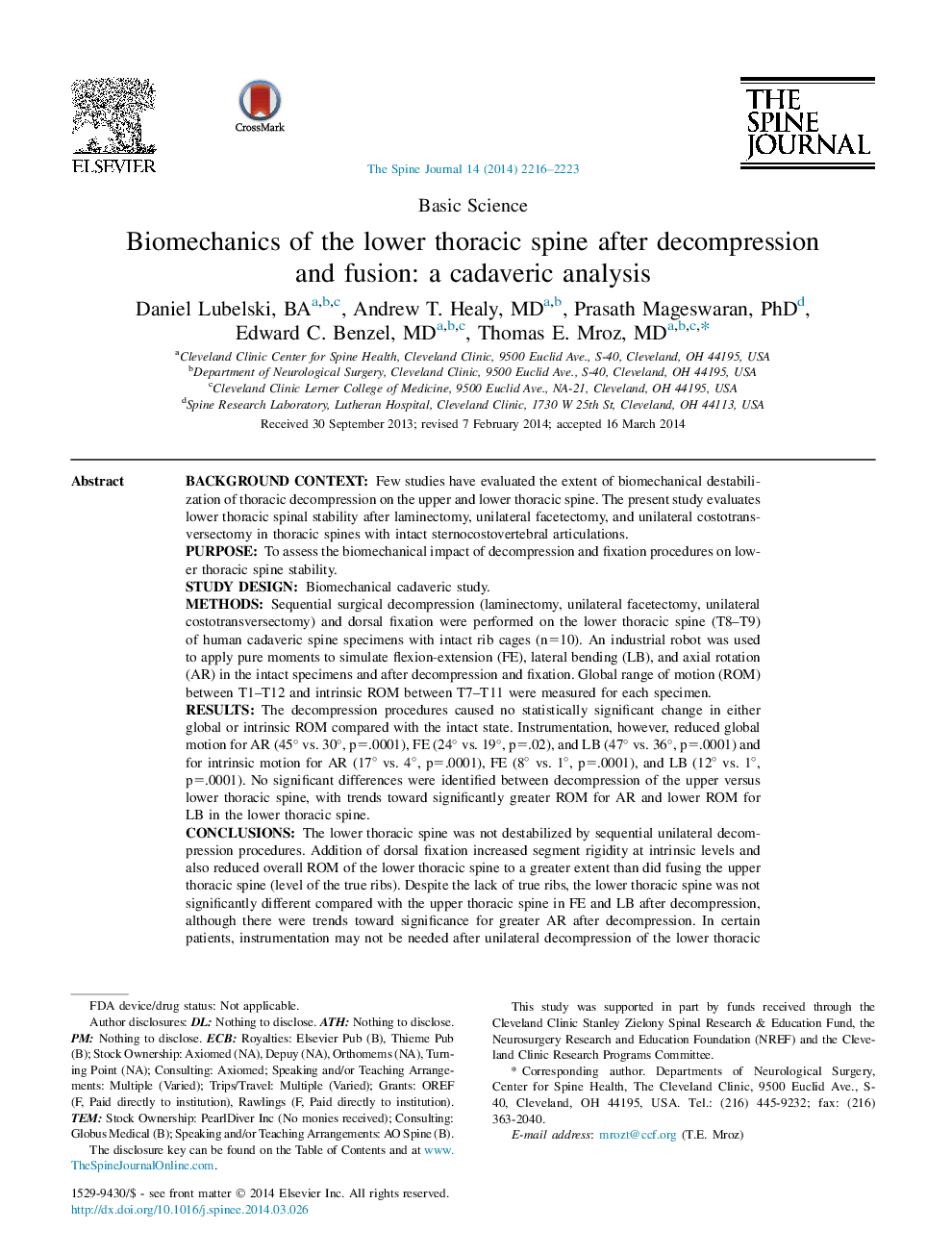| Article ID | Journal | Published Year | Pages | File Type |
|---|---|---|---|---|
| 4096685 | The Spine Journal | 2014 | 8 Pages |
Background contextFew studies have evaluated the extent of biomechanical destabilization of thoracic decompression on the upper and lower thoracic spine. The present study evaluates lower thoracic spinal stability after laminectomy, unilateral facetectomy, and unilateral costotransversectomy in thoracic spines with intact sternocostovertebral articulations.PurposeTo assess the biomechanical impact of decompression and fixation procedures on lower thoracic spine stability.Study designBiomechanical cadaveric study.MethodsSequential surgical decompression (laminectomy, unilateral facetectomy, unilateral costotransversectomy) and dorsal fixation were performed on the lower thoracic spine (T8–T9) of human cadaveric spine specimens with intact rib cages (n=10). An industrial robot was used to apply pure moments to simulate flexion-extension (FE), lateral bending (LB), and axial rotation (AR) in the intact specimens and after decompression and fixation. Global range of motion (ROM) between T1–T12 and intrinsic ROM between T7–T11 were measured for each specimen.ResultsThe decompression procedures caused no statistically significant change in either global or intrinsic ROM compared with the intact state. Instrumentation, however, reduced global motion for AR (45° vs. 30°, p=.0001), FE (24° vs. 19°, p=.02), and LB (47° vs. 36°, p=.0001) and for intrinsic motion for AR (17° vs. 4°, p=.0001), FE (8° vs. 1°, p=.0001), and LB (12° vs. 1°, p=.0001). No significant differences were identified between decompression of the upper versus lower thoracic spine, with trends toward significantly greater ROM for AR and lower ROM for LB in the lower thoracic spine.ConclusionsThe lower thoracic spine was not destabilized by sequential unilateral decompression procedures. Addition of dorsal fixation increased segment rigidity at intrinsic levels and also reduced overall ROM of the lower thoracic spine to a greater extent than did fusing the upper thoracic spine (level of the true ribs). Despite the lack of true ribs, the lower thoracic spine was not significantly different compared with the upper thoracic spine in FE and LB after decompression, although there were trends toward significance for greater AR after decompression. In certain patients, instrumentation may not be needed after unilateral decompression of the lower thoracic spine; further validation and additional clinical studies are warranted.
